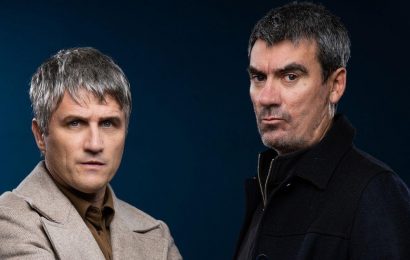A cello player turned welder and a street artist who began her career with a spray-paint can talk to Joanna Wane about the power of art to challenge the way people think.
An arts writer once asked Yona Lee what images she had pinned to her studio wall. Nothing, she answered. “I like to keep [it] clean and empty.”
The stainless steel tubing that’s become Lee’s sculptural trademark does have a certain austerity about it, although she doesn’t necessarily see herself as a minimalist artist. But her simple, neatly ordered home tells a different story.
“There’s that same sense of migration when you move house,” says Lee, who was born in South Korea and moved to New Zealand with her family when she was 11. “You don’t tend to clutter things.
“When I travel, there’s something about having everything you need in one bag. I find that quite fascinating, coming down to the very essence of the things you need to keep yourself going.”
Lee, who’s now 34, was originally destined to become a professional cello player, until she made a last-minute call to enrol for a fine arts degree instead. She’s never regretted making that decision — and it’s another way those early experiences as a young migrant have shaped her life.
Unable to speak English when she arrived in Auckland, Lee initially struggled to settle in. Looking back, she believes that lack of verbal fluency forced her to focus on different ways of expressing her emotions. “Otherwise I don’t think I would have been that interested in making music or art. There would have been too many other distractions.”
Music has remained a powerful influence on the artworks she creates — large, maze-like installations she designs digitally and then constructs from stainless steel, which she welds into shape. She’s so petite and looks so young that people (typically men) tend to underestimate her. One technician she worked with reckoned she must have secretly trained as an engineer.
Lee draws on the language of music to describe the way she interprets different spaces with subtle changes of rhythm or tone, like a classical musician, using emotion to soften the industrial masculinity of the metal.
In “Transit”, a previous exhibition that featured three interconnected structures, took the form of a sonata. Her new solo show, “Yona Lee: An Arrangement for 5 Rooms”, is an ambitious stainless steel “concerto” that took four weeks to install and opens at the Auckland Art Gallery today.
Even the materials she works with have musical roots; early experimentation with stainless steel rods was inspired by the metal spike (or endpin) on the base of a cello.
Her current practice was inspired by the time she spent in Seoul on an art residency in 2016. Travelling around on the subway, she became fascinated by the way handrails are used in public spaces, to protect people but also to corral them. It’s a perspective that feels particularly relevant right now, with barricades dividing the police and protesters in Wellington.
Her work, she says, is a reminder of how easily our movements can be controlled. “At the same time, handrails are also there for safety, so there’s a balance between two different languages. There’s always that tension between how much freedom you want and how much risk you are prepared to take.”
The lengths of stainless steel tubing that frame her work are bent and shaped to order by a commercial company before Lee welds them together, using laser tools to ensure crucial sections are measured correctly.
In “An Arrangement for 5 Rooms”, her handrails weave through the art gallery like a wayward game of Snake, from twisted knots to simple straight lines that stretch the entire length of the room. One section of railing is whimsically draped with a towel; another leads to a buzzer you can press, as if stopping a bus.
The entire installation breaks gallery etiquette by encouraging the artwork to be touched. There’s a bed and light shades in a space where the steel framework has been transformed into a domestic living space. Most dramatic of all is the room that borders Albert Park, where steel tentacles burst through the glass windows and reach out into the trees.
Auckland Art Gallery’s contemporary art curator, Natasha Conland, loves the use of natural light, which isn’t possible with less resilient materials. She commissioned the exhibition after following Lee’s career ever since she graduated from Elam.
“What’s so impressive about her practice is the way she takes those motifs of steel and industry and furniture and architecture — typically home to male practitioners, particularly in the modern period — and creates an alternative living environment that has her own characteristic to it,” she says. “Someone so small of stature handling such typically masculine materials inspires a certain confidence and intrigue.”
In the next couple of months, Lee heads to the Netherlands and France to take up art residencies delayed by the pandemic. She thinks her life as an artist would have been very different if she’d stayed in Korea, which is far more fast-paced and consumer-driven.
“In Korea, it’s all about the answer, not how you got there. Here, it’s the process that matters. You have more space and time to reflect.”
Janine Williams will never forget watching her mother pick up a handful of soil from their ancestral land on Waiheke Island and seeing it slip through her fingers.
It was a powerfully symbolic moment for the Tāmaki Makaurau-based street artist, whose work Black Picket Fence will stand on the Mokemoke Pā headland overlooking Mātiatia Bay when the biennial Sculpture on the Gulf exhibition opens next Friday.
Williams’ Ngāti Pāoa great-great-great-great grandmother is buried on the island, which passed almost completely out of iwi ownership in questionable circumstances in the late 1850s. According to a Waitangi Tribunal report, early maps show a small section of land set aside as a “native reserve”, although that never eventuated.
The word “picket” comes from the French “piquet”, a sharpened wooden post tilted on an angle to create a line of defence against attack — a literal stake in the ground. Laid out as an enclosed pen, Black Picket Fence references both the proposed “reservation” and the idealised Kiwi quarter-acre dream.
Half of the pickets have been machine cut, while the rest were hand-sawn in traditional fashion. Indented with purapura whetū patterns, a star-seed design used in tukutuku panels, they’ll be painted on-site by Ngāti Pāoa descendants, including Williams’ own whānau, as part of the installation process.
The piece is her first work to be shown at Sculpture on the Gulf. Williams is aware some may find it confronting, but sees it as a step through anger towards healing.
“When Waiheke was lost, a whole iwi lost it — not just one person. People don’t understand that feeling. When you arrive on the ferry and look at the pā site, it’s someone’s backyard now,” she says.
“My mother could have inherited a future that was collective and communal, where they all lived together and ate kai together, yet she’s lived in a Housing NZ house most of her life, because she has never been able to get her foot on the property ladder.
“When I saw her, with the whenua falling out of her hands that she should have always been able to hold, that was the story I wanted to tell.”
She and her husband, Charles Williams, were guerilla graffiti artists as teenagers, founding the international TMD collective in the late 90s. One of Aotearoa’s first female street artists, she was given the graffiti name “Diva” (which later evolved into “Lady Diva”) and tended to escape police attention because they didn’t expect girls to be packing spray-paint cans.
The couple now have four children and for the past two decades have exhibited around the world, using art as a way to give back to their community and share its stories.Williams, a culturally mandated artist for her iwi, has produced large-scale mural commissions and collaborated on a range of architectural projects. She’s currently working on designs for a bridge.
“We say in our workshops that we believe art can change the world,” she says. “It has the ability to go round the things that usually confine us, have a conversation with someone and actually change how they think.”
Williams and her husband, who grew up disconnected from their Māori roots, have taken the year off to do a full-time, immersion te reo course. She also acknowledges her Pākehā father whose parents, like her mother’s tipuna, came to New Zealand by sea.
“So I understand what that meant for those generations who have only known one thing: their grandfather had a farm and now that’s where they live. I get that. But it comes with a responsibility at this time when there’s a growing awareness of what really went on.
“The only way to get somewhere is to try to put the guard down, humbly walk towards each other and hear what we’ve got to say. That’s what my artwork is about. It’s not about me trying to scare or intimidate you. It’s inviting you to come and listen.
“In a Māori worldview, that humility of coming towards this kaupapa or kōrero brings the mana back to the people it connects to and the land it sits on. That mauri, that essence, comes into the work and into the ground and is restored. That’s what I’m hoping for.”
• Sculpture on the Gulf runs from March 4-27 (www.sotg.nz) and is a ticketed event, with those aged 12-plus requiring a vaccine pass to enter.
Source: Read Full Article
/cloudfront-ap-southeast-2.images.arcpublishing.com/nzme/WLYSIXW7X7SIWA52QRKMFPKMXY.jpg)
/cloudfront-ap-southeast-2.images.arcpublishing.com/nzme/HYTKIGSBZDOPW7DKEE2N2UGMFQ.jpg)
/cloudfront-ap-southeast-2.images.arcpublishing.com/nzme/J3ENQ4CIMOVHIWLH525S5FIJTQ.jpg)







